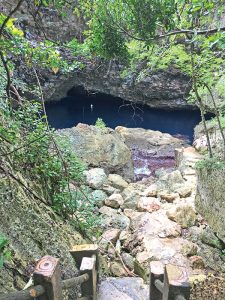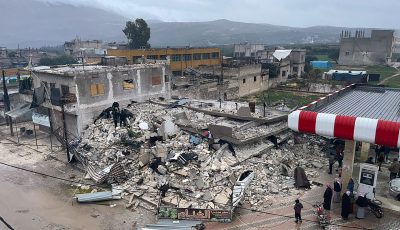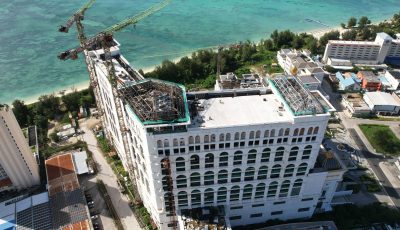Study looks if there are too many people in tourist sites

The Grotto is one of the three sites being studied by the Division of Coastal Resources Management, in terms of user capacity assessment, under its Sustainable Sites project. (L. MAURIN)
Saipan’s most popular diving site, the Grotto, gets about 700 to 1,000 visitors every day. That number may be too much for the site, so the Division of Coastal Resources Management is right now assessing the site’s capacity to absorb crowds to ensure that it remains protected.
With tourism being the primary industry in the CNMI, putting a cap on the number of people who visits the Grotto every day is important, given the strong relationship between the CNMI’s pristine environment and its economy, said Kelsey McClellan, coastal management fellow at the National Oceanic and Atmospheric Administration and is currently working with DCRM under the Bureau of Environmental and Coastal Quality.
“Folks come here because they want to see a beautiful environment,” McClellan said. “However, when you go down to the Grotto, and you have 175 to 200 people in the water at the time, that’s most likely going to diminish enjoyment. So it is taking money away, eventually, from our marine sports operators.”
McClellan is working on a User Capacity Report for three sites: the Grotto, Laulau Bay, and Obyan Beach.
“User capacity essentially is defined as how many people can fit in an area without having negative environmental impacts or negative impacts on the other people enjoying the space,” McClellan explained. “At what level does the enjoyment of this particular space become diminished when too many people are past this threshold?”
The carrying capacity of the three Saipan sites will be quantified based on three metrics: water quality data, head count data, and visitor satisfaction. Security company G4S is taking headcounts and is contracted through the Mariana Visitors Authority.
“Basically, it is like three factors for people’s enjoyment, for the economy,” McClellan added. “We need to make sure that we have rules and regulations in place that are informed by science, as to this is how many people need to be at the site where we are not losing money, but we are also not impairing the environment.”
McClellan expects to get all collected data by the end of December. Once they have the results, they will work with the Legislature in coming up with laws that will mitigate the crowds, and for these user carrying capacities to be put in place by appropriate agencies.
McClellan also emphasized the need to work with all stakeholders in the community. “…We…need to work with our marine sports operator community [to] make sure that we are all on the same page, that the tour operators are self-enforcing, that they are working to make sure that they are taking…care of the environment.”
This user capacity assessment is a component of BECQ-DCRM’s Sustainable Sites project, which started in August.
For questions about user capacity, contact McClellan at kmcclellan@dcrm.gov.mp. For more information, visit the DCRM’s website at https://dcrm.gov.mp/current-projects/sustainable-sites/.



























